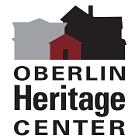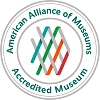Dr. A.C. Siddall’s Life as a Medical Practitioner: Researching and Making History
Wednesday, July 17th, 2013by Michelle Myers, Leadership Lorain County Intern
Upon leaving my summer internship at the Oberlin Heritage Center and graduating from Swarthmore College in two years, I plan on going to nursing school and becoming a midwife. I have taken an interest in Dr. A.C. Siddall, an OB/GYN who practiced in the Oberlin Heritage Center’s Monroe House for twenty years, not only because of the feats he accomplished as a medical practitioner, but also for his engaging and vigorous writings. While looking through a file of his research papers, historical writings, and autobiographical keepings at the Oberlin College Archives, I came upon a paper he had written the year of his retirement, 1973, titled “From Practicing Obstetrician to Amateur Historian.” This paper reflects on his career and looks forward to a life of continuous medical curiosity. Now, as I look toward my future journey into the medical field, I find inspiration in what he has written. It is an example of what I may have to look forward to, as I pause and we both, Dr. Siddall and I, can breathe, reflect, and consider the wonderful medical history that had been laid before us.
A Clair Siddall, M.D., was a doctor of obstetrics and gynecology who practiced in Oberlin for 40 years. He developed the first hormonally-based pregnancy test in English literature, delivered 5,000 babies, and served as a medical missionary in China for nine years. He did all he could for the medical practice of Oberlin in his lifetime, ultimately co-founding the Oberlin Clinic and supporting the expansion of the Allen Memorial Hospital, now Mercy Allen Hospital. He lived an incredibly meaningful life, both by way of his own driving force and the inspirations of the past. He wrote paper after paper dealing with the medical history of Oberlin during his practice. In “From Practicing Obstetrician to Amateur Historian,” Dr. Siddall discussed just how much history inspired him and could inspire others, saying “…it is sufficient for this presentation to show how any physician can enlarge his horizon by more or less active interest in the history of his own profession.” Rather than viewing his retirement as a time of complete rest, Dr. Siddall used this free time to continue exploring his curiosity, as well as making up for lost time:
“So it is that now I can follow a beautiful schedule of working at my desk until noon every day then being flexible in the afternoon. Several subjects claim my attention now,
1. History of Chinese Medicine
2. Profiles of all physicians who have ever worked in Oberlin-includes the college
3. Eunuchism
4. Religious beliefs of the common man
[5.] Uninterrupted meals with my wife who has suffered interruptions and delays and cancellations for forty years, without complaint.”
Researching history inspired Dr. Siddall to reach higher standards of innovation in his own practice. He studied marvelous icons of medical history, including Hippocrates, Galen, Soranus, Sydenham, and others. He created an extensive guide of Oberlin’s history of medical practices and practitioners, which is now at the Oberlin College Archives. While he attended professional meetings on vacation, he made an effort to visit sites of medical innovation in the field of obstetrics. On one trip, he visited a monument of John L. Richmond in Newton, Ohio, who, in 1827, “carried out singlehanded, using only his pocket instruments, the first professional cesarean in the country.” Richmond performed this cesarean under the light of one candle in a log cabin. Dr. Siddall said of this character, “[s]uch courage stirs my imagination.” Dr. Siddall embraced a similarly courageous and self-assured approach in his own practice with the Pap smear, a screening test used for the detection of cervical cancer. He was one of the first individual practitioners to introduce cancer detection to the medical office. This was in the 1950’s, a point in history when physicians were skeptical of the American Cancer Association’s call for frequent cancer screenings. Because he was able to identify cancer early, Dr. Siddall was able to treat and save patients’ lives.

Dr. A.C. Siddall and his wife, Estelle.
Dr. Siddall was a historian, and at the same time, he was a medical practitioner who did things worth writing about. These factors resulted from each other, in a wheel of innovation. Medical practice is a result of medical history, and medical practice creates medical history. I believe this can be most emphasized by Dr. Siddall’s words: “So we learn that to make history takes precedence over and is more satisfying than to read history. However I never cease to be inspired by those who have gone before as pioneers in our specialty.” Indeed, these pioneers helped form Dr. Siddall’s practice and may continue to inspire medical practitioners of the future. For me, Dr. Siddall has been one of these moving pioneers in imagination. Studying medical history offers a clearer understanding to how the medical practices of today have developed. It also inspires a medical practitioner to come up with innovative and life-saving ways of handling his or her practice. I take historical research seriously because it has and will save lives.
Sources:
Siddall Papers, Oberlin College Archives.
“From Practicing Obstetrician to Amateur Historian”, Oberlin College Archives.












